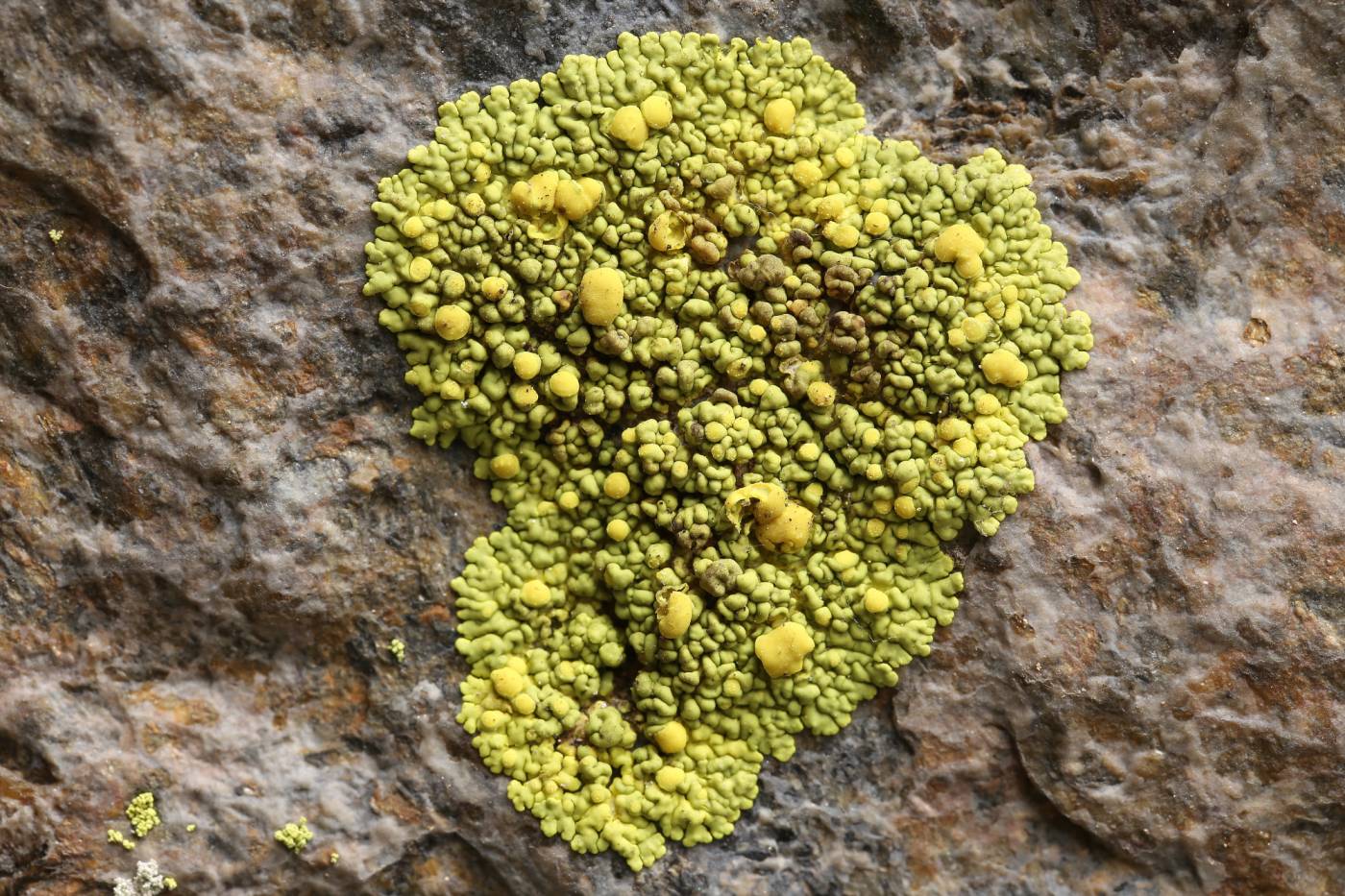A lichen with a yellow placodiod thallus, convex lobes and convex apothecia with a soon-disappearing margin. It grows on acidic siliceous rocks, sometimes enriched with metals. It prefers vertical and overhanging surfaces. The species often occurs on relic exposed rocks, in primarily treeless areas. In Europe, it is mainly distributed in the northern-most part and montane areas and is considered an arctic-alpine species by many authors. In the Czech Republic, P. chlorophanum is scattered in most montane areas but has also been found at various localities at middle to lower elevations. The longest-known low-elevation locality is the Vraní skála rock near Zdice (Hilitzer 1925), but there are also other recent localities; in the Šumava foothills, the Brdy highlands or the Křivoklát and Ralsko regions. There have been various adventive findings of the species during the last decades, e.g., on worked rocks at cemeteries or observation towers in Germany (Wirth et al. 2013). Small thalli on obviously young substrates have also been observed at a couple of places in the Czech Republic.
Literature: Hilitzer A. (1925): Nové naleziště Acarospora chlorophana v Čechách. – Věda přírodní 6: 217–218. Wirth V., Hauck M. & Schultz M. (2013): Die Flechten Deutschlands. – Ulmer, Stuttgart.
taxonomic classification:Ascomycota → Lecanoromycetes → Acarosporales → Acarosporaceae → Pleopsidium
Red List (Liška & Palice 2010):VU – vulnerable
Red List (Malíček 2023):C3 – endangered
Occurrence in the Czech Republic
All records: 60, confirmed 33. One click on a selected square displays particular record(s), including their source(s).

